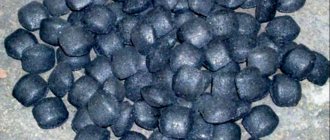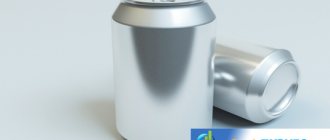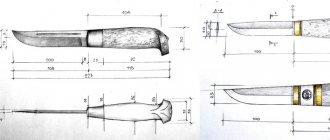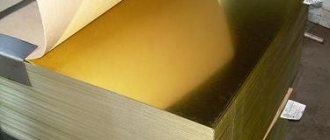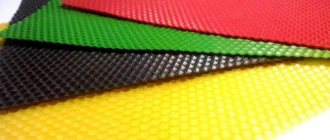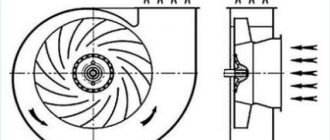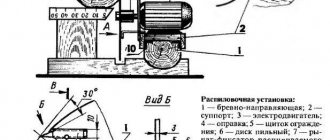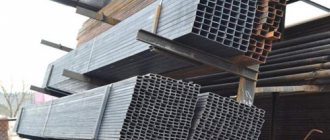Charcoal production is a way to invest money in a promising and environmentally friendly project. The demand for charcoal is growing every year, and the most delicious food is considered to be the one cooked with natural fuel. If you live in an area that is rich in forests, and there is a wood processing industry nearby, then you can try making charcoal for sale. This product is used in everyday life, in the construction industry, in the production of paints and varnishes, glass; it is even added to animal feed. How to start such a project from scratch - read the article.
What is charcoal
The unique properties of charcoal have been known for a long time. The fact that humanity began to use charcoal for its needs is known from archaeological excavations. Entire ancient cities and settlements used charcoal production as the main source of their income. Actually, the first environmental disasters were associated with the massive cutting down of trees to obtain this product. For example, in Crimea, in order to make amphorae for wheat, the Karaites and Genoese cut down relict forests. Because of this, some areas of Crimea are still considered unsuitable for living. This situation marked the beginning of the development of coal in England and France.
Charcoal is produced by burning wood of various species. A special feature of the process is that as a result of high-temperature exposure, the structure of wood tissue changes - chemical elements are burned out, but carbon remains. The chemical formula of the resulting product shows that its composition contains on average up to 84% non-volatile carbon. When burned, this fuel avoids the release of the most dangerous combustion product for humans - carbon monoxide. It is known from chemistry that it is this colorless and odorless gas that is released during the combustion of volatile substances without access to oxygen.
In addition, the properties of charcoal make it possible to use it in other important processes for humans - water and air purification, as a medicine, even artists have found use for this material.
But still, the composition of the material, in which carbon is the main element, has found the greatest application in industry:
- metallurgy - catalyst and reducing agent in the production of iron and steel;
- chemical industry - filters for hazardous industries;
- energy - fuel, fillers for filtration units.
Today, there are many known methods for extracting this product, from the method in which charcoal is burned in a pit, to high-tech methods for producing briquettes. In this case, not whole tracts of valuable trees are used as raw materials, but compressed sawdust of trees.
Thus, the resulting value of charcoal is:
- High content of non-volatile carbon and absence of phosphorus and sulfur;
- High heat transfer during combustion;
- Long burning period;
- Possibility of use as a renewable resource;
- Almost in its complete combustion without any residue.
Main Buyers
Given the high demand, the production and sale of finished coal can turn into a respectable business with a very high percentage of profitability. Food service facilities alone consume more than four million tons of charcoal in one season. If we add to this other enterprises and living facilities (schools, kindergartens, universities, etc.), as well as private consumption (hunting, fishing, summer cottages), you will get a completely gigantic figure. It is necessary to take into account that this form of business does not require any high-tech and costly forms of production.
Types and grades of wood fuel
The most common classification of this type of fuel divides it by type of material of origin. This classification makes it possible to select a product according to its calorific value. Depending on the color, fuel can be divided into types:
- Black – made from soft deciduous trees (alder, poplar, aspen);
- White – burned from hard wood (oak, hornbeam, birch);
- Red – obtained from coniferous trees using soft charcoal technology.
According to the state standard GOST 7657-84, charcoal is divided into three classes - A, B, C. GOST defines the highest grade as fuel grade A - in it the mass fraction of non-volatile carbon is 90% - 78%. For grade B, the mass fraction is 88-77%, grade B should contain from 77 to 67% carbon.
GOST 7657-84 Charcoal. Specifications
1 file 446.94 KB
In addition, there are other quality standards for charcoal, for example, the specific gravity of charcoal, weight 1 dm3, mass fraction of ash, and the presence of fractions of certain size in the volume. True, these standards apply mainly to industrial products. The production of charcoal at home is usually used to assess the quality by studying the color of the product and the presence of different fractions in the composition - the number of large pieces, medium, small and wood dust.
Scope of application of charcoal and its types
Charcoal comes in the following types:
- Red – light charring of needles is used in production.
- Black - made from aspen, willow.
- White - used: oak, beech, birch, ash, hornbeam. At the initial stage of production, light charring occurs, then a jump to high temperature (1000 degrees). However, unlike other types, white charcoal does not retain its bark.
Raw materials of various types are widely used in various fields both for the purposes of the national economy and in industrial production in the production of ferrous and non-ferrous metals.
The raw material contains virtually no phosphorus or sulfur, which makes it invaluable for metallurgy. Metal products are subjected to carburization with coal, this makes it possible to increase the carbon content, thereby improving their properties and avoiding oxidative processes. The largest share in terms of consumption of raw materials is occupied by enterprises producing carbon disulfide and silicon products.
There are a number of other areas that are in dire need of charcoal, let’s name the main ones:
- Chemical industry, during production:
- varnishes;
- paints;
- artificial fibers;
- glass products;
- chemicals and poisons;
- plastics;
- filter elements;
- cellophane products;
- antiseptics.
- The construction industry as a means of absorbing moisture and odors.
- In electrical engineering, raw materials are valued for their resistance to radiation and toxins - they are used to create various parts, conductive elements, and electrodes.
- Medicine distributes raw materials in tablet form as a remedy.
- The agricultural industry uses raw materials in the following areas:
- food additive for birds;
- food additive for cattle;
- food additive for small livestock;
- increasing the nutritional properties of the top layer of soil.
- Floriculture - as an organic element.
- By the food industry - as a dye, it is marked on the packaging of the finished product with the letter and number E 153.
- The cosmetics industry uses raw materials in products for the face, skin, body, and hair.
The Japanese have gone even further - they use raw materials for foundations in the construction of buildings, the production of baked food products, the production of dental care products, and soap products.
On the territory of the Russian Federation, the classic purpose of raw materials is fuel for lighting home stoves and when preparing food. The production of birch charcoal makes it possible to obtain heat without causing a flame. It is not recommended to start a fire using chemicals, but you can avoid harmful and unpleasant odors. Roll up the paper and place a circle of wood chips in the shape of a hut. If the hut catches fire, it is necessary to place wood material. After this, fill the structure with coal. As soon as the coals have flared up, distribute them evenly over the entire area, wait until the last flames disappear and the coals acquire a gray tint.
There are different technologies for producing charcoal
Properties
The beneficial properties of this fuel are determined by several indicators. First of all, they are determined by the combustion temperature of the charcoal. Thus, pressed fuel is actively used in the smelting of cast iron and steel. Reaching a high combustion temperature during melting (over 1350 degrees), the chemical composition of charcoal acts as a catalyst for the reaction in the metal. In blast furnace production during the smelting of cast iron today, the share of fuel used is small, only 7-8%, but the cast iron produced is of the highest quality. This is achieved due to the properties of charcoal - it does not contain substances that, when heated, form volatile gases, and during combustion, impurities of substances that deteriorate the characteristics and structure of the metal. The high density and specific gravity of charcoal used in metallurgy make it possible to maintain the uniformity of the smelting process without the use of additional technologies.
Among the beneficial properties of charcoal are its high combustion temperature and long-term release of high temperature heat. This is especially clearly demonstrated when preparing dishes on the grill. Once ignited, the fuel quickly reaches a high temperature and maintains combustion for several hours.
An important indicator for fuel is the ash content. According to GOST, the highest class of charcoal when burned has an ash content of 2.5 to 3%. For domestic needs, class B is usually used; it is suitable for both heating and cooking. Unlike the highest class with a higher combustion temperature, the use of class B coals poses less danger, primarily due to the lower combustion temperature - it is about 300 degrees lower. This difference between the combustion temperatures of the two types of charcoal is associated with the structure, size of the bunts and the type of fuel preparation. A higher temperature is obtained when coals from denser layers of wood are burned. In addition, storage of class A material provides for an increase of up to 20% in the presence of water in the volume of the entire mass.
An important indicator for charcoal is the homogeneity of the mass, so in the total mass of grade A, the 25 and 12 mm fractions should be no more than 12% in total, while at the same time there should be no smut in the composition of the volume at all. In the artisanal production of charcoal with your own hands, the properties are determined by the color, size of the smut and the amount of dust. It is believed that the larger the fraction and the more saturated its color, the higher its quality. In many ways, this method is justified, since it indirectly indicates the chemical composition of the fuel and the presence of a large amount of carbon in it. A more in-depth laboratory chemical analysis can show the presence or absence of sulfur, phosphorus, heavy metal salts and individual resin-based compounds in its composition. During laboratory analysis, the ash content of the material is also checked. For premium quality fuel, the ash content is 2.5-3%, for average quality it is 3.5-4%.
The density depends on the brand and type of wood from which it is made. The weight of a standard volume of fuel is 1 cubic meter. meter is:
- From spruce wood – 100-120 kg;
- Pine – 130-140 kg;
- Birch – 175-185 kg;
- Bukovogo – 187-195;
- Oak - 200-215.
The material itself is very porous; if we take the ratio of the pore volume to the total volume of the substance, then for birch charcoal it will be 72%, for spruce charcoal 80%. Because of this, the specific density of charcoal, depending on the material of origin, can be:
- Spruce – 0.26 g/cm3;
- Pine – 0.29 g/cm3;
- Birch – 0.38 g/cm3;
It is the high porosity of the material that requires special care when lighting in the grill and barbecue. First of all, before ignition, you need to treat the coals with an alcohol-containing liquid and give a little time for it to be absorbed and penetrate as deeply as possible into the pores.
Another indicator of fuel - heat capacity depends on the temperature and humidity of the material. For dry fuel (with a humidity of 7-15%) the average heat capacity is 0.18 kcal/kg; for absolutely dry fuel with a humidity of 2-4% the heat capacity is 0.2 kcal/kg.
The calorific value, that is, the ability to release heat, is about 7500-8170 kcal/kg at a temperature of 380-500 degrees.
Application
Today, the use of charcoal in everyday life mainly comes down to three main areas. First of all, you need charcoal for a grill or barbecue; a long burning period, the absence of harmful smoke components and uniform heat allow it to be used as fuel.
The second important point of its use is water and air purification. Why do you need charcoal in a kitchen hood filter? It’s all very simple; it is an excellent sorbent that absorbs all combustion products, dust and soot. Such filters are installed in circulation hoods.
No less interesting is its use as a water filter; it is effective at the fine purification stage when it comes to chemical reagents and biological pollutants.
The third use is for heating and fuel for home workshops. The fuel is highly valued by those involved in pottery and blacksmithing. This is simply an indispensable type of fuel for the forge and kiln.
True, when purchasing, you need to pay attention to the shelf life - the longer the material is stored, the more moisture it absorbs and the less its heat transfer; when burned, it may not produce the required temperature.
Financial calculations
The financial plan is an important part of the business plan. Correctly carried out calculations allow you to assess the real burden on the budget and calculate the amount of capital investment required to implement a business idea.
The financial plan consists of:
- cost estimates;
- calculations of profitability and payback periods of the project.
How much money do you need to invest to organize production?
The cost estimate includes two sections:
- start-up investments - the amount of capital investment required to start production from scratch;
- operating expenses - the amount that must be invested monthly in the operation of the enterprise in order to avoid downtime and failures.
Approximate calculation of investments at the start (in rubles):
- registration of documents, obtaining permits from regulatory authorities - 80,000;
- premises rental - 60,000;
- advertising campaign - 50,000;
- raw material reserves, consumables for a month of operation of the enterprise - 280,000;
- equipment - purchase and installation - 2,000,000;
- unforeseen expenses - 30,000.
To establish industrial production of charcoal, a capital of 2.5 million rubles is required.
If we talk about a small workshop with one furnace, you can meet the amount of 200,000 - 250,000 rubles.
Expenses for routine maintenance of the enterprise:
- rent - 60,000;
- replenishment of the raw material base - 250,000;
- personnel wage fund - 300,000;
- utility payments - 15,000;
- accounting outsourcing - 15,000;
- depreciation of equipment - 25,000;
- advertising - 15,000.
Monthly contributions will be 680,000 rubles plus taxes.
about the production of paving slabs.
Production process technology
The technology for making charcoal has not undergone much change since the inception of the industry. The main technology for producing charcoal is still kiln burning. Today, burning furnaces have changed their design, making the process more technologically advanced. But the principle of how to make charcoal remains the same - combustion of wood raw materials without access to oxygen is the main condition. The technological process consists of several cycles:
- Drying raw materials;
- Pyrolysis process;
- Cooling.
In principle, this option is similar to how charcoal is made at home. The only difference is that you can make charcoal in a home installation using improvised means, but in industrial installations each phase is strictly controlled. The result is fuel that meets the description in state standards.
Selection of raw materials
It is optimal to select hardwood trees for burning. Sometimes it is advised to strictly select trees of the same species. In this case, it will be possible to obtain combustion at one temperature, and the result is a homogeneous product of good quality. However, in the process of work it often happens that different types of raw materials are used in production. This is not a problem; when filling a vertical oven, the filling is first made of hardwood, and then of softwood.
Drying wood
Drying is carried out in a firing chamber at a temperature of 140-160 degrees. The use of higher temperatures leads to cracking of the smut and, as a result, the production of fine coals. Drying is carried out in an atmosphere of flue gases and at the end of it the wood with a moisture content of 4-5% should be obtained.
Pyrolysis
The second stage in the production of charcoal is pyrolysis. This stage consists of dry distillation, when the temperature rises to 150-300 degrees to remove all remaining moisture. Upon reaching 300-301 degrees, the process of exothermic pyrolysis begins. The wood begins to change color, the internal temperature rises, and for some time it exceeds the temperature in the chamber. At this moment, no additional heat is required, since the process of evaporation of volatile substances begins. Upon reaching 400 degrees, the wood finally changes color and becomes black. Wood purified by pyrolysis contains 65-70% carbon.
Calcination
After some time, when the reaction begins to fade, the temperature begins to drop and the risk of spontaneous combustion increases. In order to prevent this in industrial production, calcination is used - maintaining the required temperature by external heating. To do this, the container with wood is additionally heated from the outside, as a result of which the proportion of non-volatile carbon increases to 85-90%. Also, by regulating external heating, the temperature is reduced to a point where spontaneous combustion is no longer possible, after which the cooling process begins.
Charcoal production equipment
You can make fuel at home using improvised means and even in an earthen pit. For industrial production, retort-type combustion furnaces are used. These can be either stationary or mobile installations. The main element of such installations is the combustion container. The pyrolysis barrel is the most expensive element of the installation. Today, manufacturers are offered several options for industrial installations, which include a full set of equipment for the job.
How to make charcoal at home
Making charcoal at home is done using improvised means. This is the simplest technology, although it does not guarantee the production of high-quality charcoal.
Before making charcoal with your own hands, preparatory work is carried out, which necessarily includes measures to ensure fire safety. To obtain high-quality charcoal, logs of the same type of wood are selected, they are cleared of bark and chopped into approximately equal smuts.
Before you start making charcoal with your own hands, the burning method is determined. The most popular ways to get charcoal at home is by burning wood:
- in an earthen pit;
- in a barrel;
- in the oven.
The first two are carried out outdoors, the last is carried out in two stages - the first in the stove (optimally if the stove was built outdoors), and the second on the street.
In the hole
This is the cheapest way to make charcoal at home. To do this, a hole 0.8-1.0 m deep and 0.5-0.6 m in diameter is dug in the ground. Firewood is placed at the bottom to start a fire. After the fire is lit, raw materials are placed in the pit. Firewood is stacked to the top. After the fire has engulfed the entire volume of the pit, and the wood gradually begins to burn out, the pit is covered with a metal sheet, and wet earth is poured on top, so as to completely block the access of oxygen.
12-16 hours after closing the pit, carefully open the lid. After about 1-1.5 hours, the smut can be removed. With this method of producing charcoal in a pit, the yield of the finished product is from 25 to 35% of the volume of installed firewood.
In a barrel
You can make charcoal at home in a barrel. To do this, take a metal barrel. For a large volume you will need a large 200 liter barrel; for coal with a volume of 3-4 kg, a 50 liter barrel is sufficient. For work, it is advisable to choose a barrel with thick walls, a large neck and, if possible, a lid that can be locked. To obtain charcoal in a barrel, the technology does not change much, the only thing is that it is recommended to place it on bricks in order to warm it up afterwards.
The barrel is filled with wood, ignited and after it flares up, it is closed with a lid. After about 12-18 hours for a 200 liter container, it is recommended to light a fire under the barrel and warm it up for 3-4 hours. After warming up, the barrel can be left to cool.
Remove the lid carefully so as not to inhale carbon monoxide. The material can be removed after 4-6 hours. When the barrel is fully loaded, you can get up to 40-50% of the volume of finished fuel.
In the oven
You can also make charcoal in a stove. The process consists of two stages. The first stage is burning wood in the stove. This is done until the firewood is completely burned out. Next, the firebrands are removed from the furnace firebox and placed in a bucket or ceramic container and covered with a lid. The yield of charcoal with this method is small, only 2-2.5 kg.
Types of coal making equipment
Charcoal production as a business is an attractive idea. Start-up capital does not require significant costs, and high demand allows you to quickly find your consumer. 200 sq.m. is enough to accommodate the equipment. m of open land. Servicing one furnace requires the presence of a team of 2-4 people.
Equipment for the production of charcoal can be divided into three groups: stationary, mobile, auxiliary.
A charcoal kiln (pyrolysis barrel) is the main equipment in the charcoal production process. It is in this furnace that the pyrolysis of wood occurs. Today, furnaces have different configurations and operate using different methods. Charcoal kilns can be either stationary or mobile. But the output product always has the same properties and quality.
In addition to production, the charcoal kiln bears the burden of recycling, bringing double benefits. Therefore, mobile ovens are convenient to use in logging operations for waste-free production, as well as on construction sites.
Stationary furnaces are used for continuous main production of charcoal, when there is no need to change location. Stationary charcoal kilns differ from mobile ones in their impressive size, a wide range of tasks and high productivity. In stationary furnaces it is possible to use different types of fuel. And in mobile ones there is only waste from wood production.
The main type of charcoal burning equipment is a furnace in which the wood does not come into contact with the combustion gases of the pyrolysis process. In such a stove, the wood is located in a separate chamber with holes through which heating occurs.
Another type of charcoal kiln is equipped with vertical retorts, thanks to which pyrolysis at all stages occurs more efficiently. The disadvantage of such a furnace is a higher level of exhaust gas emissions into the atmosphere. Therefore, such a charcoal kiln must be additionally equipped with cleaning filters.
The charcoal kiln for producing charcoal is made of brick or metal. The metal, in turn, is insulated with heat-resistant material to prevent heat transfer. Chambers and retorts are made of heat-resistant metals.
The oven includes:
- combustion unit: designed for drying raw materials;
- charcoal burning block: serves for the main pyrolysis process;
- base: designed for attaching combustion and charcoal blocks;
- ramp: used for unloading a container with a finished product.
A wood splitter (cleaver) is an auxiliary equipment that is used to prepare firewood. Wood splitters come in horizontal and vertical types. In horizontal splitters, the log is placed in a groove and pushed onto the knife, or the knife moves towards the log. In vertical wood splitters, the log is placed stationary and the knife is lowered onto it. This type of cleaver has a higher efficiency, since the log avoids friction.
An automatic charcoal packaging line is auxiliary equipment designed to automate and complete the charcoal production process. The design consists of a receiving hopper with a net against smut, a vibrating chute, a bucket conveyor and a storage hopper with a volume sensor. Charcoal, alternately passing through the nodes of the packaging line, acquires a marketable appearance.
Weight dispenser – automatically distributes a given mass of lump coals into bags. This allows charcoal to be packaged as a final product.
Separator – distributes coal products into specified sizes for various needs and price categories.
The business of sewing socks does not require large financial outlays, so it quickly pays off. Find out what equipment is needed to produce socks.
On this page you can learn about the production technology of fuel briquettes.
You can read about how to choose a machine for making plastic bottles at the link - https://buisiness-oborudovanie.com/dlya-pet/oborudovanie-dlya-proizvodstva-plastikovyx-butylok/
Equipment designed for the production of charcoal does not contain fans or gas blowers, resulting in energy savings. The cost of coal production is reduced, increasing the manufacturer's profit.
High-quality charcoal retains the structure of the wood pattern; the annual rings on the end of the block are especially noticeable. When tapped, charcoal makes a loud sound, has a shiny black color and a small number of cracks. The quality and quantity of coal produced is affected by the moisture content of the raw materials. Of all brands, birch or oak charcoal are considered the best, as they are distinguished by long-lasting and even heat when burning.
The absence of harmful waste during production and combustion allows charcoal to remain one of the important fuel products.
Product labeling
In industrial production, several points need to be taken into account. Before packaging, the material must be cooled and packaged (depending on customer requirements). The following information must be indicated on the packing slip or on the package itself:
- manufacturer;
- the name of the product is indicated;
- information about the origin of the fuel;
- the certificate number is indicated;
- net weight;
- there must be information about fire hazard class 4;
- storage rules and instructions for use are indicated.
